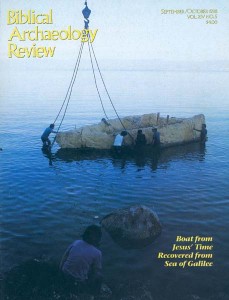Dating the Pottery from the Galilee Boat Excavation
Sidebar to: The Galilee Boat—2,000-Year-Old Hull Recovered Intact
Seventeen identifiable pieces of ancient pottery—including a complete lamp and cooking pot, as well as fragments of cooking pots, storage jars, a jug and juglets—were recovered from the Galilee boat and from the surrounding area during the excavation. The pottery was not significantly water-worn, so we assume that the pieces were deposited near the places where they were found.
The pottery types recovered are all known from other Galilee excavation sites. Several of the more common types were made at Kefar Hananya, a Galilean pottery manufacturing center of the Roman period, located about 8 ½ miles northwest of the boat site.1
None of the pottery is necessarily related to the hull itself; hence it cannot be used to date the boat. To date the boat, only intrinsic evidence may be used: evidence such as the carbon-14 dates obtained for the wood, and the method of vessel construction. However, the pottery recovered during the excavation is significant for estimating when there was activity in the vicinity of the boat.
The pottery pieces found near the Galilee boat were the same types as pottery recovered in excavations at Capernaum and Migdal (also known as Magdala), two ancient settlements on the coast of the Sea of Galilee; at Meiron, in the Upper Galilee; and at Gamla, in the western Golan.
Already a library member? Log in here.
Institution user? Log in with your IP address.

